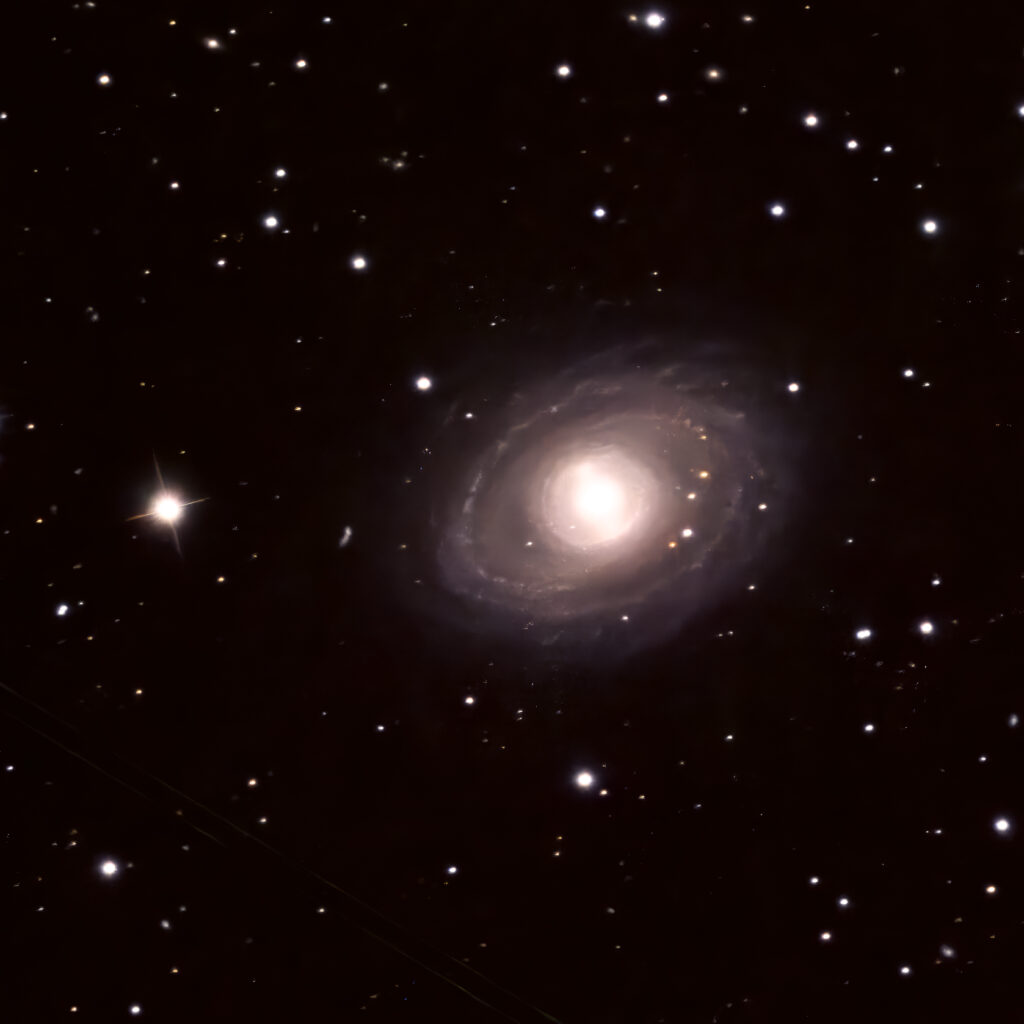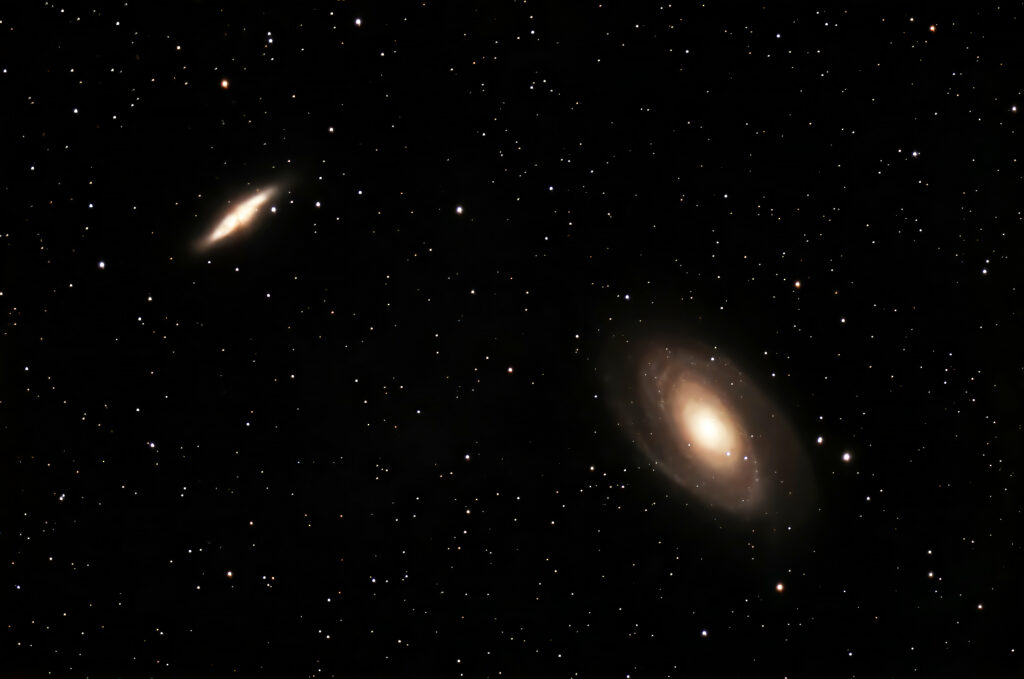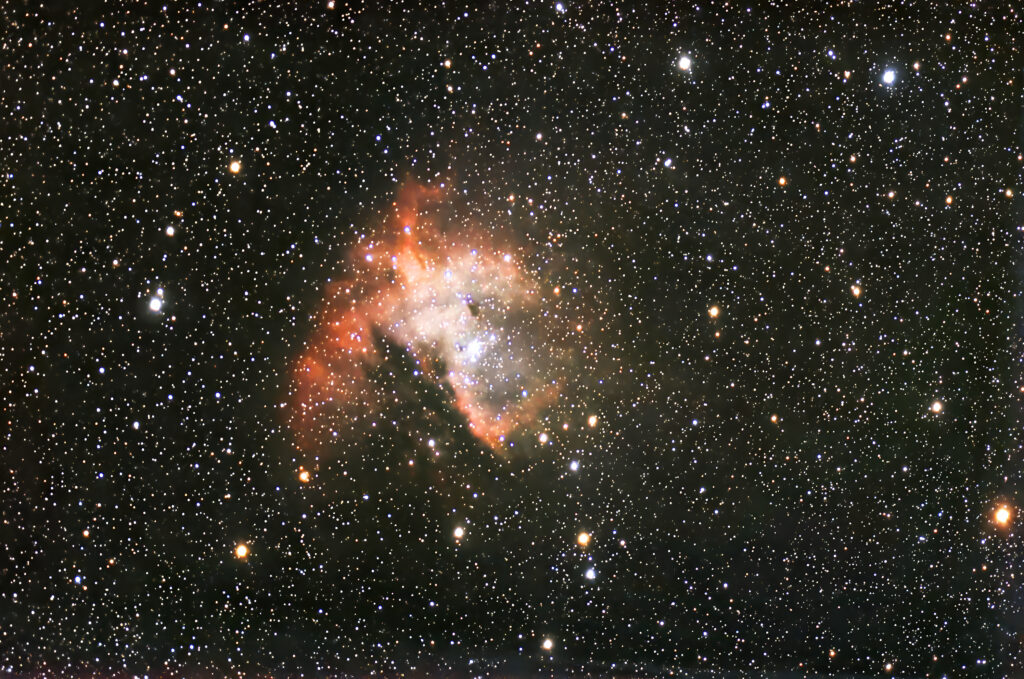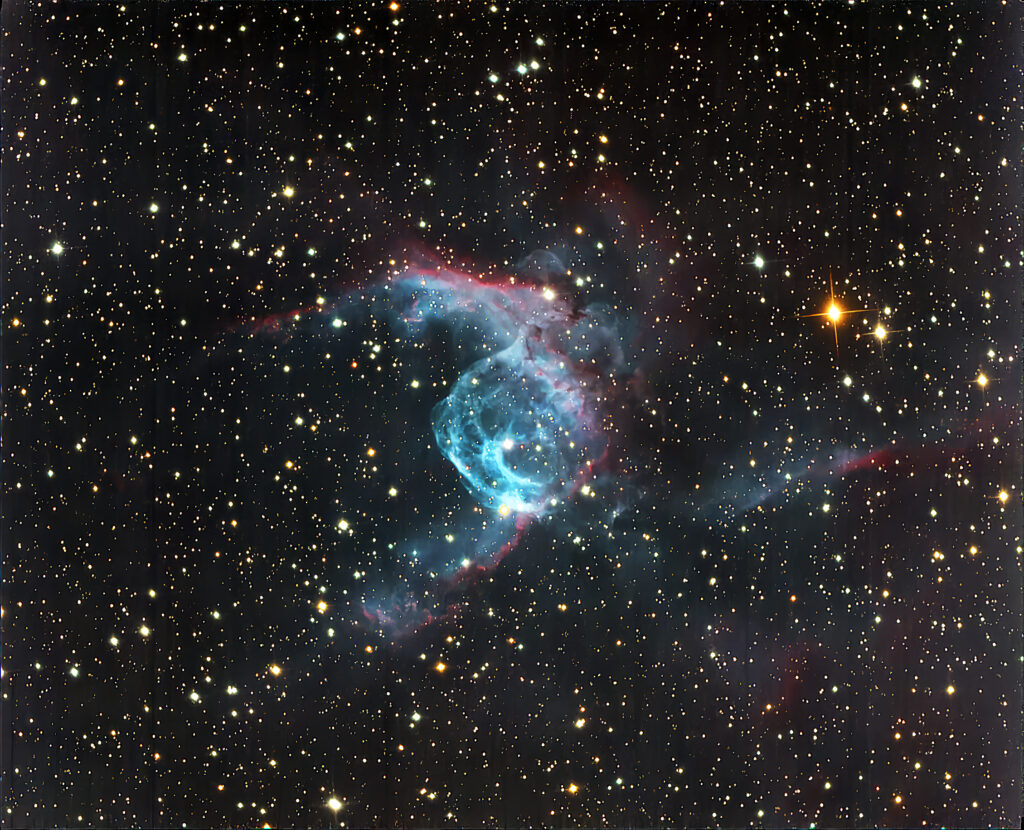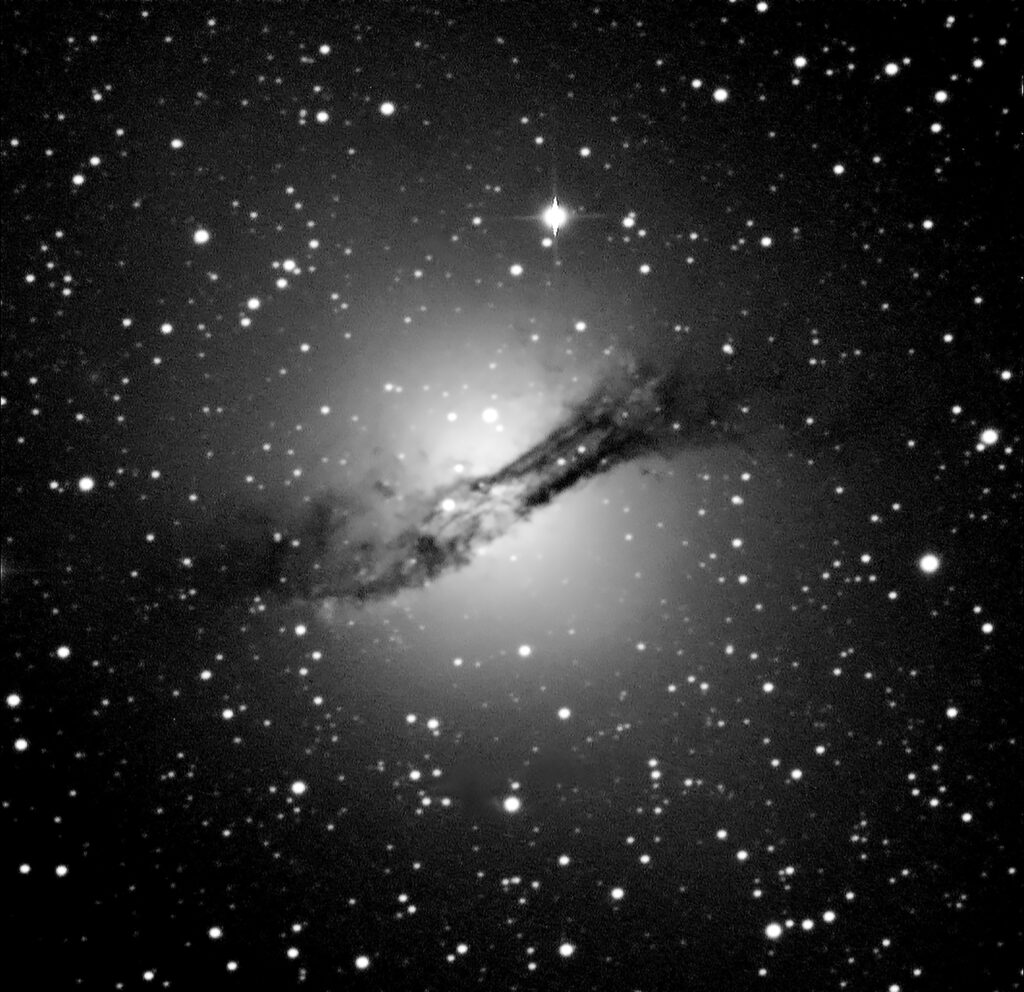
Figure 1 – Centaurus A taken in black and white at the iTelescope.net Sliding Spring Observatory in Australia. (c) DE WOLF 2024.
One of the cool facts about the Observacar is that you can drive it in your minds eye to Australia and Chile and image all sorts of southern sky celestial objects using the itelescope network. One of the most intriguing of these is Centaurus A. In the vastness of the universe, there are a few objects that capture the imagination of astronomers and space enthusiasts alike.
Centaurus A is also known as NGC 5128. It is located approximately 13 million light-years away in the Centaurus constellation. Despite this seemingly gigantic distance, Centaurus A is in fact our closest active galactic nucleus. It is classified as an elliptical galaxy, but with a twist: it also has a distinct dust lane that cuts through its center at an angle, giving it a unique appearance.
Centaurus A contains an estimated 100 billion stars, but what makes it particularly unique is its combination of a massive elliptical galaxy and an active core, all wrapped up in a dusty, star-forming region. The dust lane visible in images gives the galaxy a fascinating and almost ominous look when viewed through a telescope.
Perhaps needless-to-say, its core contains a supermassive black hole. This black hole is incredibly powerful and actively feeds on surrounding gas and dust. The energy released from this endocytotic process (to borrow a term from biology) results in intense radiation, which is what makes Centaurus A such an enormous radio source.
As a result, Centaurus A’s core is extremely active and is spewing out huge jets of energy and matter in the forms of radio waves, X-rays, and optical light.These jets can extend for hundreds of thousands of light-years into space, which is enough to influence star formation and the environment in the surrounding galaxy.
The dark dust lane that bisects the galaxy is made of cold gas and dust, which is believed to be a remnant of an ancient collision with a smaller spiral galaxy. This galactic collision likely occurred several billion years ago, and it’s a key factor in the galaxy’s current shape and structure.
In fact, the formation of the dust lane suggests that Centaurus A underwent a galactic merger, a common phenomenon in the universe. When galaxies collide, they often merge to form a new and larger galaxy. These interactions also fuel the activity of the central black hole, which grows as it consumes more material from the surrounding environment.
Centaurus A is a favorite target for many of the world’s most advanced telescopes, including the Hubble Space Telescope, Chandra X-ray Observatory, and the Atacama Large Millimeter Array (ALMA). Each of these observatories has provided unique insights into the structure and behavior of the galaxy because they each observe in different spectral regions.





